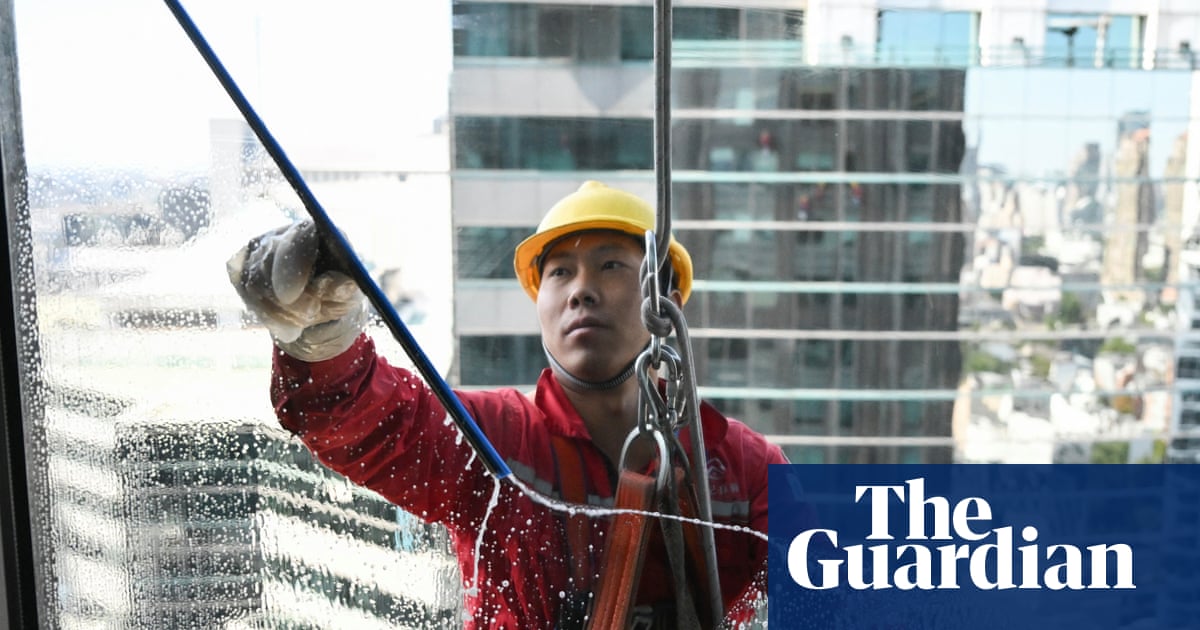Helen Bone was diagnosed with an asbestos-related cancer in 2021. She was 38. The type of cancer, mesothelioma, is incurable; the best prognosis is a few years, though most people don’t get that long. “You always think of asbestos as a disease from decades ago – affecting men who worked in heavy industry – so to be diagnosed in my 30s is shocking,” she told the Northern Echo in 2022. “I want to see my children grow up but now I have to come to terms with the thought that this might not happen.” Sadly, Bone passed away in November last year, just three years after her diagnosis.
For most people, the word “asbestos” will evoke previous eras: dusty Victorian and Edwardian factories; the shipyards of the interwar period; postwar building sites. Yet asbestos was not banned in the UK until 1999. According to the Health and Safety Executive (HSE), it still kills around 5,000 people every year. Many anti-asbestos campaigners believe that this figure is a serious underestimate, and that the real total is closer to 20,000. Mesothelioma has a long latency period: anything from 15 to 40 years. Helen Bone could have been exposed to asbestos at school, at the college where she studied to become a critical care practitioner, or at the two hospitals where she later worked.
Bone is part of what’s known as the third wave of asbestos deaths. The first wave was those who worked directly with asbestos in mines and factories. The second wave was those who worked with or near the material: shipyard and rail workers, builders and other tradespeople, engineers. The third wave comprises all those who have been exposed as asbestos-containing materials deteriorate or are disturbed, releasing millions of fibres into the air, unseen. If the first and second waves constitute a horrific occupational disaster, then the third wave is a vast environmental and infrastructural catastrophe.
Around 6m tonnes of asbestos were imported into Britain between 1870 and 1999. It remained mostly hidden behind walls and ceilings, laid into cement roofs and pipes, and was woven through textiles. British companies used two especially harmful types: crocidolite and amosite, which were mined in South Africa. British companies, Cape plc and Turner & Newall chief among them, relied on British imperial domination and, later, apartheid, to keep mining costs low and profits high.
Thanks to the efforts of anti-asbestos campaigners and trade unionists, the use of asbestos declined significantly in the 1980s and 90s, before it was finally banned in 1999. But the ban was not accompanied by a coordinated removal programme. The start of the new millennium should have been the moment for a reckoning with asbestos. Instead, the material receded from view, its prohibition giving the impression that it was a problem solved. A lot of asbestos has been removed over the past 25 years. There are several decent companies that observe the law and work safely. There are also plenty of cowboy outfits that cut corners and put their workers and the public at risk.
A lot of asbestos remains in place and is now far beyond its intended design life. The Control of Asbestos Regulations 2012 operate on the basis that risk is low if the material is undamaged and left undisturbed. This policy of in situ management is bad in theory and worse in practice. A recent audit by the National Organisation of Asbestos Consultants and the Asbestos Testing and Consultancy Association found that “of 128,761 buildings … examined over a six-month period, 78% had asbestos,” and that “71% of the asbestos items recorded … were damaged”; 30% were in the highest risk category, requiring immediate removal.
The regulations place much of the onus on the “duty holder” who is responsible for monitoring asbestos-containing materials and for supplying information to building users in an asbestos management plan. Yet in many cases, rather than living documents, these plans are left to gather dust in a drawer. The regulations do not differentiate by the type of building, even though studies have shown that the risk of developing mesothelioma and lung cancer increases dramatically for those who are exposed when they are young. Nor is there any differentiation by the type of asbestos, even though it is known that amosite and crocidolite are particularly dangerous.
There are nations that have chosen to address this challenge. In 2016, the South Korean Ministry of Education ordered that asbestos be removed from all schools by 2027. The government has allocated 2.872 trillion won (£1.8bn) to the programme. The Australian Asbestos and Silica Safety and Eradication Agency was founded in 2013 and is coordinating a multi-phase national strategic plan to eliminate future cases of asbestos-related disease in the country.
The HSE does appear to be moving in this direction, though it has yet to set out a clear timeframe. In June, the all-party parliamentary group on occupational safety and health published a report on the legacy of Cape plc. As well as calling on Cape’s parent company, Altrad, to pay £10m towards research into asbestos-related cancer, the group reiterated the need for the government to commit to a national asbestos removal programme.
The enduring presence of asbestos in schools, hospitals, housing and various other buildings presents not only a technical and logistical challenge, but also a challenge of political imagination. In the face of compounding social and ecological crises, the demand to remove and rebuild cannot simply be a call to replace what was there before, just without the asbestos. Rather, it implies a different kind of society with properly funded education and healthcare sectors, mass retrofitting programmes, and well-resourced local councils training and running their own asbestos removal teams.
after newsletter promotion
With its self-imposed fiscal rules and general lack of a substantive, positive vision for the country, it seems unlikely that the Labour government will arrive at such a programme on its own. If Britain’s asbestos disaster is to be addressed, then coalitions of campaigners, trade unionists and tenants’ rights groups will be vital. In the 1970s and 80s, similar coalitions took on a powerful industry and succeeded in reframing asbestos as an urgent risk to public health. Now, just as then, change will come from below, or not at all.
-
Tom White is a writer and education worker. Bad Dust: A History of the Asbestos Disaster, his first book, is published by Repeater

 5 hours ago
9
5 hours ago
9

















































